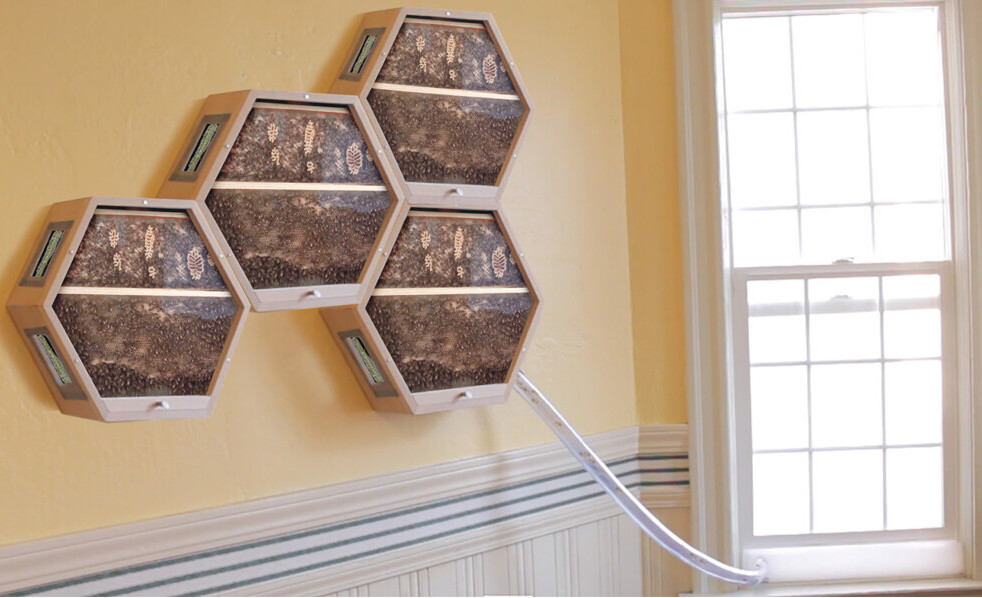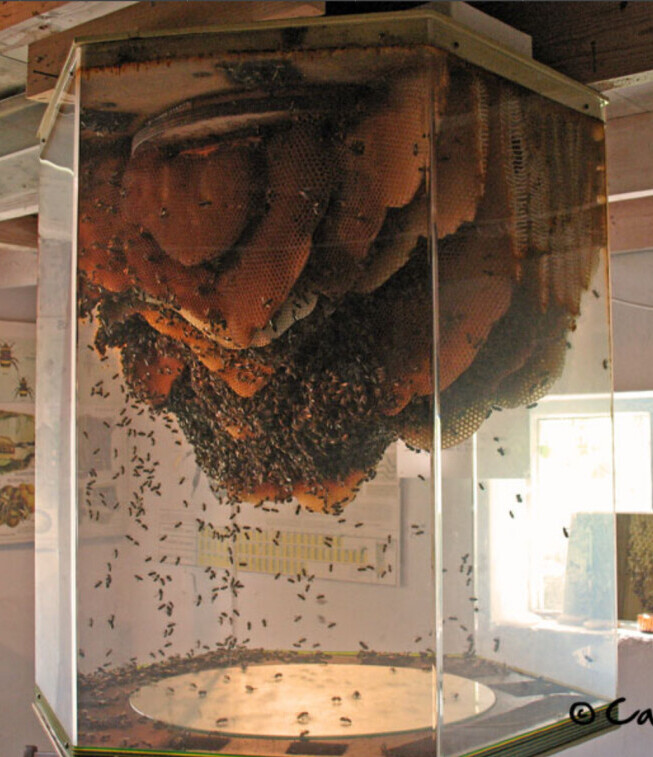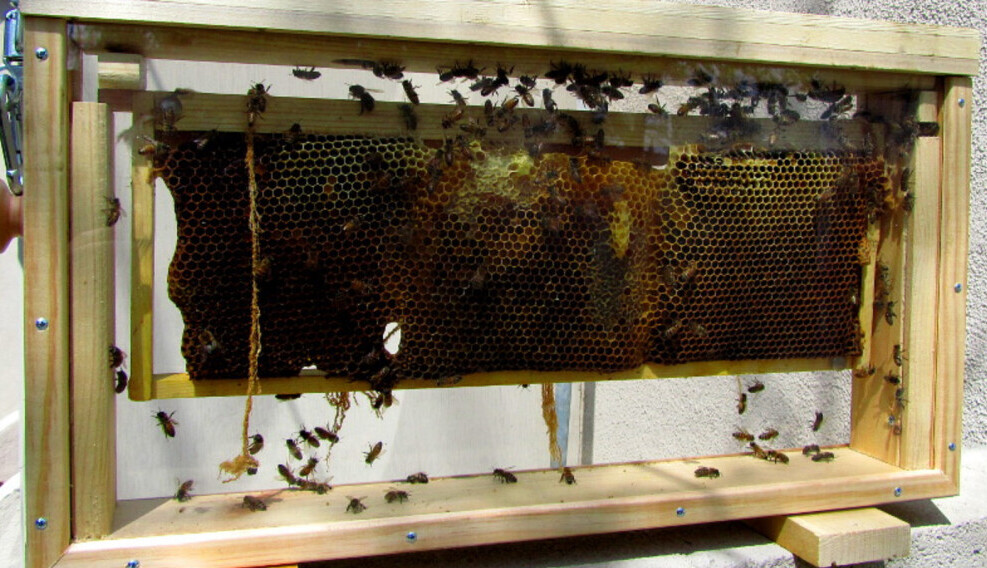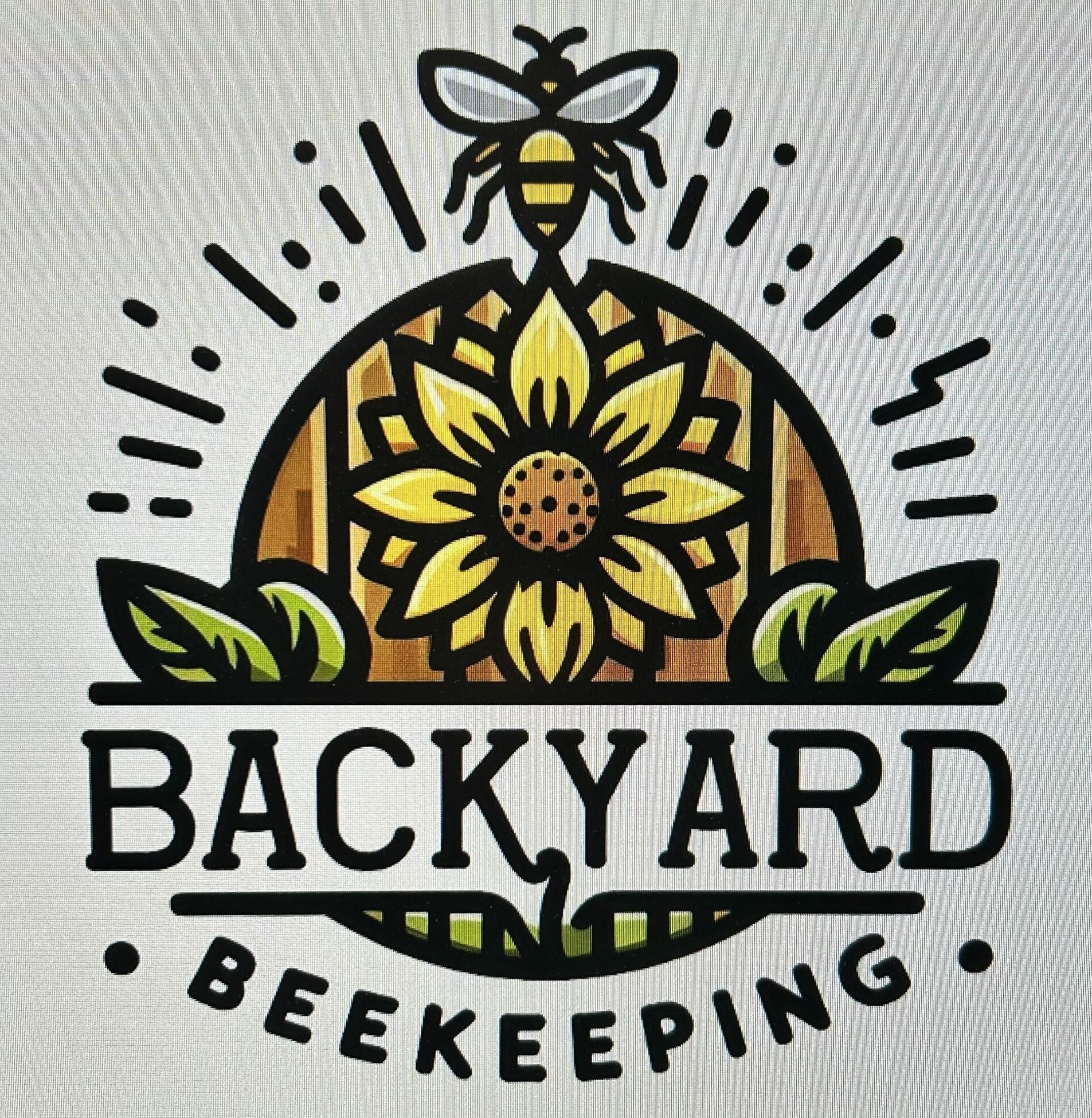Observation beehives are not just for seasoned beekeepers. They’re like an open window into the tiny, buzzing world of bees, letting you see things most folks only read about. These hives are brilliantly designed to allow peeking into the secret lives of these essential pollinators without causing them harm or distress.
The idea of having bees buzzing around in transparent homes isn’t new. People have been intrigued by observation beehives since at least the 19th century. The concept has evolved dramatically, thanks to modern materials and tech know-how, making them more accessible than ever.
Why does this matter? Well, observation beehives offer an up-close education in bee behavior, how they communicate, and how they go about their busy days. It’s not just about honey production; it’s about watching the hive dynamics unfold right before your eyes.
These hives play a crucial role in educating people about bee ecology, fostering a deeper appreciation for their role in the environment. It goes beyond just being fascinating; it’s about understanding their crucial role in pollination and, essentially, in our food systems.

Types of Observation Beehives: Finding the Right Fit
Observation beehives come in a variety of shapes and sizes, each designed to offer unique viewing experiences and benefits. Picking the right one can really elevate your beekeeping journey.
Vertical and horizontal observation hives are the most common types. Vertical hives stack up like high-rises, mimicking a bee’s natural habitat. They’re space-efficient and offer great viewing, as bees tend to build their combs in an upward direction. On the other hand, horizontal hives are more like lofts, giving a broader view of bee life spread across more frames. Both styles provide excellent insight, so it’s more about what suits your space and aesthetic.
Material matters too. Glass observation hives are the classic choice, offering excellent clarity and easy cleaning. Acrylic options are gaining popularity thanks to their durability and added safety — no glass shards if there’s an accident.
Each type has its pros and cons. Glass hives can feel more traditional, while acrylics might provide the modern twist that attracts today’s bee enthusiasts. Durable and lightweight, they’re often more forgiving with temperature extremes too.
So, what should you pick? It really boils down to personal preference and practical needs. Consider your space, the hive’s aesthetics, and the viewing experience you want. Remember, the primary goal is to enjoy and learn from the bees without interfering with their natural activities.

Location Matters: Ideal Spots for Indoor Observation Beehives
Picking the right spot for an indoor observation beehive can make or break your beekeeping experience. The hive’s location has to provide comfort both for the bees and for everyone sharing the space with them.
First off, think about light. Bees love sunlight, but too much direct sun can overheat the hive. Aim for a spot with good, indirect light to keep your buzzing pals comfy and active. Windows facing east are ideal because they give morning light while avoiding harsh afternoon sun.
Now, space is crucial. You’ll need to set up the hive where there’s enough room for maintenance without cramped surroundings. Also, consider that people will gather around for a peek, so ensure the area allows for easy friend and family gatherings.
Whether you choose indoor or outdoor setups really depends on your home and climate. Outdoors might sound good, but indoor setups offer more stable temperatures and protection from the elements. However, if you do opt for an outdoor scene, make sure it’s sheltered but still allows for easy internal access to the hive.
Lastly, think about how the hive fits into the big picture of your environment. If you’re in a city, rooftop gardens can be a neat space-saving option. Or, for those with properties near schools or community centers, installing a hive indoors can create fantastic educational opportunities.
Location is more than just where the hive sits — it’s about balancing access, aesthetics, and environmental conditions to make sure both you and your bees are happy.

Rules and Regulations: Keeping it Legal and Safe
Before diving into the wonderful world of indoor beekeeping, it’s critical to get familiar with the legal side of things. Regulations around indoor observation beehives vary widely depending on where you live. This isn’t just bureaucratic red tape — these rules are in place to ensure safety and harmony between beekeepers and the broader community.
Many regions require permits for keeping bees, even if they’re just indoors for observation purposes. It’s a smart move to check local government websites or contact your area’s beekeeping association for the most accurate info. Consider thinking about it as a golden opportunity to connect with fellow bee enthusiasts.
Safety standards are another beast altogether. Bees can be unpredictable, and it’s essential to consider not just their wellbeing but yours too. Safety gear and proper tools are non-negotiables. Having a plan for managing allergic reactions, although rare, is part of being a responsible keeper.
Bees are sensitive to their environment, so creating a healthy indoor habitat is crucial. Pay attention to humidity, temperature, and ventilation. Bees have their own little climate needs, so snagging a hygrometer or using smart tech to monitor their space isn’t overkill — it’s caring.
Public awareness and community sentiment should never be overlooked. Engaging neighbors early and often about your plans can prevent any potential conflicts and might even generate some new interest and support for your project. An open-door policy (figuratively speaking) about your hive goes a long way in building a neighborly bond.
Getting the legalities right isn’t just about the paperwork — it’s about setting a positive tone for your bee journey right from the start.
Designing Your Beehive: Balancing Aesthetics and Functionality
Designing an observation beehive is a creative process that marries beauty and practicality. It’s not just about a pretty setup. A well-designed hive enhances your beekeeping experience while keeping your bee colony snug and healthy.
Size matters. You want a hive that’s manageable but gives enough room for the bees to do their thing. Too small, and you might hinder colony growth; too big, and maintenance can become a hassle. The sweet spot is a hive that fits your available space comfortably and allows easy access for regular upkeep.
Incorporating tools for observation is a must. Think wide windows with clear visibility, maybe even some nifty removable panels. Cameras are gaining popularity too — a small camera inside can help you catch all the buzz without disturbing the hive. It brings an up-close view that’s just unbeatable.
Ventilation and temperature control aren’t glamorous, but they’re pivotal. Bees are sensitive to their environment, so ensuring good airflow and a steady temperature helps maintain a healthy hive. This might mean adding vents or positioning your hive in a spot where it naturally gets some airflow.
The design should always come back to bee welfare. Every choice, from layout to materials, should enhance your bees’ living conditions. Aesthetically pleasing designs are great, but they should never compromise the health and safety of the colony.
Crafting a hive that’s both eye-catching and functional isn’t as tricky as it sounds. With the right balance, you’ll have a hive that draws admiration and keeps your bee family thriving.
Maintenance and Care: Ensuring Thriving Bee Colonies
Keeping your observation beehive in tip-top shape isn’t just about the bees — it’s about creating a rewarding experience for yourself too. Regular maintenance is essential for ensuring your colony stays thriving and healthy.
First up, routine inspections are a game-changer. Make it a habit to check your hive regularly, keeping an eye out for any signs of disease or stress. It’s kind of like a health check-up for your bees, making sure everything’s buzzing along nicely.
Feeding might come into play during tougher seasons. Bees need resources, especially when nature’s not providing. Having some sugar syrup on hand can fill the gap during colder months or between blooming cycles when nectar’s scarce.
Diseases like Varroa mites are a real threat, so know how to spot trouble. Regular mite checks and treatments when necessary are vital. There’s plenty of bee-friendly treatments available that don’t require harsh chemicals, ensuring the whole process stays natural and safe for your buzzing buddies.
Swarming is part of the bee life cycle, but it can mean losing part of your colony. Keeping an eye on their behavior and managing hive space can prevent swarming. If it happens, don’t panic — having a plan can make all the difference.
Routine care is not just about reacting to issues or problems. It’s about being proactive and keeping your winged residents happy. Solid maintenance leads to a robust colony that not only survives but thrives, giving you more to observe and enjoy.
Educational and Environmental Impacts: Broader Benefits of Observation Beehives
Observation beehives aren’t just fascinating windows into the world of bees—they’re powerful educational tools that can make a substantial environmental impact. By setting one up, you’re contributing to a greater understanding of bees and the crucial roles they play in our ecosystem.
One of the fantastic advantages of these hives is their ability to educate both young and old. Whether installed in a school or community center, they offer an interactive learning experience that traditional lessons can’t match. Seeing bees in action sparks curiosity and raises awareness about their vital role in pollination and biodiversity.
For the home-based beekeeper, sharing this hobby can educate friends and family. Having people over for a hive-viewing can lead to enlightening conversations about bee conservation and ecology. It brings these crucial topics down to earth, making them relatable and easy to grasp.
On a broader scale, observation hives can promote local biodiversity. By supporting healthy colonies, you’re helping to improve pollination, which benefits plants, animals, and entire ecosystems. Even in urban settings, these mini pollinators make significant positive changes.
Success stories around observation beehives abound, from urban rooftop initiatives to community engaged projects in schools. These stories show how these hives aren’t just about keeping bees—they’re about fostering a deeper respect for nature.
Stepping into the world of observation beehives can make you a local champion for the environment while offering personal enlightenment and community connection. It’s about creating a buzz—quite literally—that resonates far beyond your four walls.
